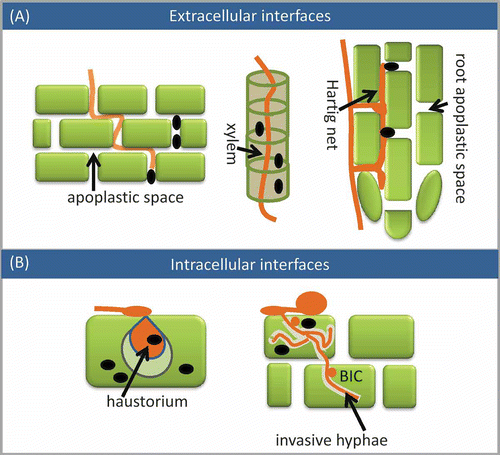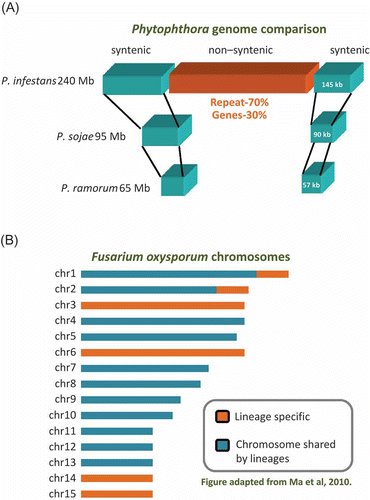Figures & data
Figure 1. Effectors and interfaces of plant–pathogen interactions. (A) Extracellular interfaces. The Hartig net is typical of ectomycorrhizal fungi. (B) Intracellular interfaces. Invasive hyphae are developed by the rice blast fungus. The plant cells are represented by squares or columns. Fungal or oomycete tissues are represented by threads and ovals. Effectors are indicated with black dots.

Figure 2. Genome plasticity associated with effector location. (A) The Phytophthora infestans genome is partitioned into repeat-rich non-syntenic regions and repeat-poor syntenic regions. The genome size of each species is listed on the left of the genomic region. Effector genes are frequently associated with the repeat-rich region. (B) The Fusarium oxysporum genome habours lineage-specific chromosomes. The repeat-rich region of the genome coincides with the lineage-specific chromosomes. Pathogenicity-related genes are enriched in the lineage-specific regions.
